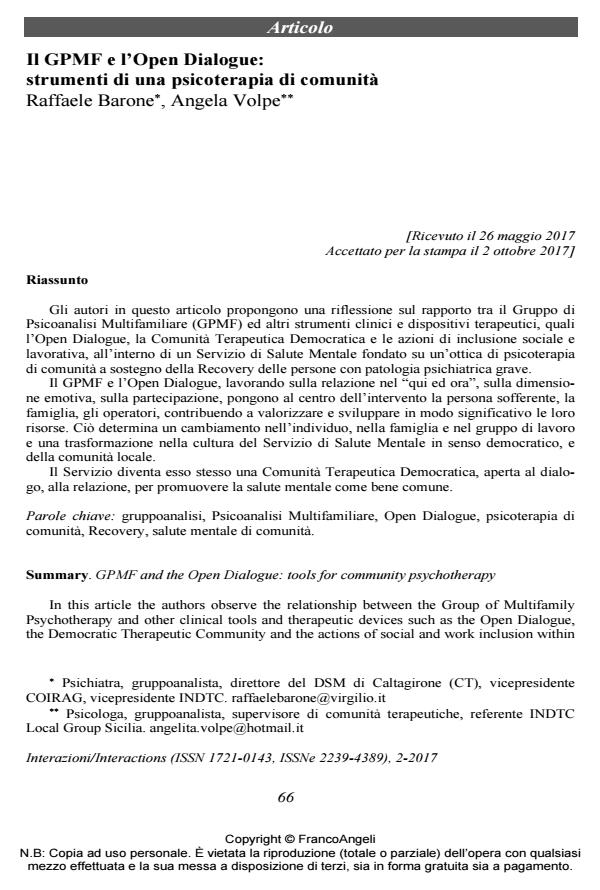GPMF and the Open Dialogue: tools for community psychotherapy
Journal title INTERAZIONI
Author/s Raffaele Barone, Angela Volpe
Publishing Year 2017 Issue 2017/2
Language Italian Pages 16 P. 66-81 File size 1102 KB
DOI 10.3280/INT2017-002007
DOI is like a bar code for intellectual property: to have more infomation
click here
Below, you can see the article first page
If you want to buy this article in PDF format, you can do it, following the instructions to buy download credits

FrancoAngeli is member of Publishers International Linking Association, Inc (PILA), a not-for-profit association which run the CrossRef service enabling links to and from online scholarly content.
In this article the authors observe the relationship between the Group of Multifamily Psychotherapy and other clinical tools and therapeutic devices such as the Open Dialogue, the Democratic Therapeutic Community and the actions of social and work inclusion within a Mental Health Service funded on the idea of community psychotherapy that supports the Recovery of individuals with serious psychiatric pathologies. The GPMF and the Open Dialogue, working on the relationship in the "here and now", on the emotional dimension, on the participation, they focus the intervention on the suffering individual, the family and the professionals, significantly contributing to the enrichment and development of their resources. This causes a change in the individual, in the family and in the work group and a transformation in culture of Mental Health Services in a democratic direction and a change in the local community. The Service becomes itself a Democratic Therapeutic Community, open to dialogue, to promote mental health as a common good.
Keywords: Group-analysis, Multifamily Psychoanalysis, Open Dialogue, community psy-chotherapy, Recovery, community mental health.
Raffaele Barone, Angela Volpe, Il GPMF e l’Open Dialogue: strumenti di una psicoterapia di comunità in "INTERAZIONI" 2/2017, pp 66-81, DOI: 10.3280/INT2017-002007